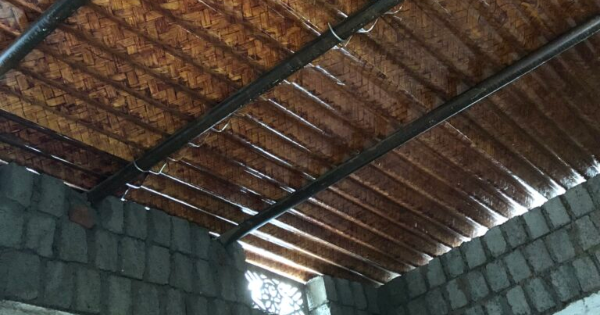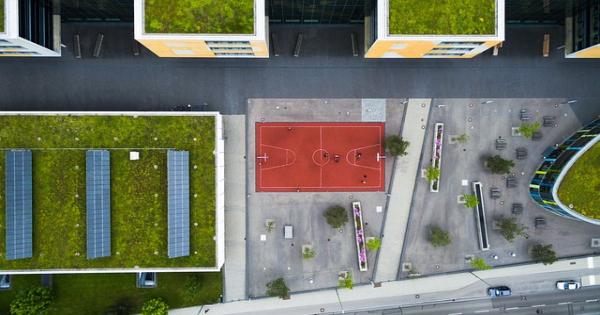Eco-friendly Roof Makes Huge Impact as Low-Income Families in India Struggle with Effects of Climate Crisis

By Cass Jacoby.
Scientists awarded a grant to support their renewable and affordable roofing material that could be the solution to the intolerable heat affecting Indian families that live on less that $5 a day.
In India the temperatures can stay well over 100 degrees for weeks. It can get even hotter under small shacks where thin metal roofs trap heat in. Climate change continues to make the country hotter and air conditioners remain a luxury.
One McKinsey report predicted that by the end of the decade, parts of India will be at risk of heat waves that are so extreme that humans may not be able survive outside, even in the shade. But even on a normal hot day, a simple change in the building structure that can lower the temperature makes a world of difference for the people living inside.
These are just a few of the reasons why Civil and Environmental Engineering Professor at Washington State University (WSU) Vikram Yadama is so passionate about creating sustainable and renewable building materials for affordable housing.
In an effort to make renewable housing materials widely available to lower- income households, Vikram and researchers at WSU’s Center for Composite Materials and Engineering (CCME) are partnering with a Tacoma-based start-up to develop climate resilient and affordable roofing materials from bamboo.
“Bamboo roofing materials already exist, but they are expensive and most often used in higher income communities,” Alexa Bednarz, CEO of Eco-Shelter tells the WSU Insider.
The team has already been awarded $1 million from the National Science Foundation Small Business Technology Transfer Phase II award to develop a cost-competitive and low carbon solution. In aiming to develop a roofing material that is durable, environmentally friendly and will absorb less heat, the team of researchers have created a bamboo composite roofing sheet.
“Support from NSF to commercialize a technology which can impact health, wellbeing, and our planet in a very tangible way is an incredible opportunity,” says Alexa. “I am interested in the idea of social entrepreneurship and how one might develop products and services with sustainable business models that could meet the needs of the many people in the world who live on less than $5 a day. So much of housing directly affects people’s health and wellbeing.”
The intersection of housing and health are undoubtedly tied together, and the issue of climate friendly affordable housing is no clearer than in this project. The thin metal roofs that so many low-income families use as roofing essentially turns the home into an oven in the hot climate of India. Additionally manufacturing tin or fiber sheeting requires much more energy and releases more carbon dioxide emissions that worsen the climate crisis.
Luckily, the researchers have found that their bamboo roofing system is about seven degrees cooler while being a more durable roofing material and reducing carbon dioxide emissions.
The research team continues to improve the bamboo composites, looking into developing three-dimensional bamboo strand composite panels that work similarly to a wood-based oriented strand board so that they can make use of bamboo waste while also being easier to manufacture.
“A strand-based three-dimensional composite panel really opens up the potential in manufacturing roofing panels of varying configurations as well as other building products,” says Vikram.
As someone who was born and raised in India, it is profoundly meaningful for him to be able to create solutions that use locally available fiber. “Researchers like us don’t often get to see the impact of our work directly or so quickly,” says Vikram. “In this project’s we’re able to see that, which is really quite gratifying.”
Stay up to date with the latest roofing industry news when you sign up for the RCS Week in Roofing e-news.
Photo credit: WSU Insider
About Cass
Cass works as a reporter/writer for RoofersCoffeeShop, AskARoofer and MetalCoffeeShop. When she isn’t writing about roofs, she is putting her Master’s degree to work writing about movies and dancing with her plants.






















Comments
Leave a Reply
Have an account? Login to leave a comment!
Sign In